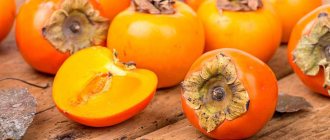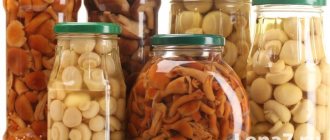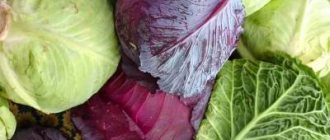Since ancient times, people have been using flavoring additives to food - spices and herbs. They give food a unique aroma, have anti-inflammatory and antioxidant properties, and promote better absorption of cooked dishes. Some types are used in the preparation of canned food. Seasonings are of plant origin and can be used fresh or dried. To preserve the aromatic properties, it is important to follow the rules for their storage.
Storage conditions for spices and seasonings
In the store, spices are sold in glass jars or bags made of paper and heat-sealable materials. The maximum permissible weight for retail packages is 100 g. Once the package is opened and spices are used, they must be stored correctly for further use.
Light
Daylight and direct sunlight negatively affect the taste of spices and lead to fading. The best option would be a dark storage place: on the shelves of kitchen cabinets with blank doors or in light-proof containers. A shelf in the pantry is also a good option. A refrigerator is also suitable for these purposes.
Temperature
The essential oils that make up most spices evaporate quickly at elevated temperatures. Therefore, spices should be sealed and stored at moderate temperatures. The optimal indicator is no higher than +20°C.
Open Storage Options
To make the seasonings look neat, they are poured into identical jars. Storing in store-bought bags and containers of different sizes is unattractive and spoils the appearance of the kitchen, creating a feeling of clutter. The same goes for labels - they should all be the same style.
Hanging open shelves
Most often used in small kitchens, where every free centimeter is important. Open shelves are attached to the wall so that they are not exposed to constant sunlight and allow you to quickly take the desired container. Shelves can be made of plastic, wood, metal and attached to a wall or apron. Spices are poured into ordinary glass jars or purchased in unusually shaped containers with an airtight lid.
Wooden open shelf
It is better to choose shallow shelves - for one jar, otherwise they will stand in several rows, blocking each other.
On a note! Very often, the store sells designs in the form of beautifully decorated gift sets. You can look at the idea of storing spices and implement it in your kitchen, which will be much cheaper.
Railings
Rails save space in the kitchen and are suitable for storing spices. This is a convenient, functional device that takes up little space and comes in different styles and designs. In addition to matte and chrome roof rails, there are gold, bronze, brass, black, and brown. To store seasonings in the kitchen you will need special jars with lids in the form of hooks or hanging shelves.
Table carousels and stands
These are organizers that allow you to store seasonings in the kitchen in a beautiful form and are supposed to be placed on the worktop. Tabletop carousels and various multi-tiered stands are convenient for finding the right seasoning.
On a note! The tabletop carousel must be stable - with a heavy base and a weighty center of gravity. Sometimes it is fixed to the surface using silicone suction cups.
Magnetic containers
Magnetic jars can be placed on the refrigerator or metal board, which is included with purchase. You can make a board yourself by painting it with special magnetic paint.
Test tubes
Glass test tubes on a wooden decorative stand will transform any kitchen. You can use a narrow shelf screwed to the wall. From a test tube it is convenient to add spices to dishes.
Under the cabinet
An original storage method that looks interesting in a rustic or Scandinavian style kitchen interior. Under a cabinet or shelf, you can hang store-bought organizers with magnets or regular containers with screw-on lids. The second storage method can be done independently by punching a hole in the lid with a nail and screwing it to the shelf with a self-tapping screw. To use the seasoning, you need to turn the base of the container clockwise.
On a note! To ensure that the jars are clearly visible, they are placed in a checkerboard pattern.
Hooks
To implement this idea in the kitchen, you will need small hooks and jars with a special lock. The holders are screwed to a wall cabinet or shelf, hooking onto them with a metal loop on the lid.
Instead of cans, you can use canvas bags with tight ties, which are pre-soaked in a concentrated salt solution and dried. Seasonings stay fresh for weeks.
Pockets
The method involves storing seasonings in the kitchen in store-bought bags. The pockets are made of fine mesh and look like a book; you can find them in the store or make them yourself. They are easy to use, since each seasoning has its own place, and to find the one you need, you just need to look through the pockets.
Niche in the wall
A niche can be created in the wall next to the stove, but not too close so that the spices do not overheat. The depth corresponds to the dimensions of the containers that are used for storage, the height is 4-5 cm larger to make them convenient to take out. It is better to choose jars made of tinted glass or plastic, since the niche will have no doors. Frequently used spices can be stored in the kitchen in any jars - they will not have time to spoil.
How to store spices?
Spices and seasonings should be stored in tightly closed containers. These can be glass, metal, plastic, wooden jars with lids that ensure tightness. You can buy containers specially designed for this, or adapt them for storing baby food jars and juices. If the housewife decides to use improvised containers, each jar must be provided with a sticker with its name.
Also, after opening the original packaging, you can leave the spices in paper containers. And to preserve the aroma, securely close the torn edge with a clothespin or clip.
How long do spices last?
Whole spices (for example, peppercorns) retain their quality for 3 to 4 years, and ground ones for 2 to 3 years.
Dried herbs (such as basil or rosemary) last for 1 to 3 years, but fresh herbs only last a week or two in the refrigerator.
These periods are quite vague for several reasons, for example:
- some people store their spices in more optimal conditions than others
- what is acceptable in terms of quality for some may not be sufficient for others, and vice versa
- Some spices and herbs retain their potency a little longer, while others (like bay leaves) not as long
Most dried herbs and spices should last at least 6-12 months past the date on the label. There are also a few exceptions, such as salt and vanilla extract, which generally last indefinitely.
Here's a chart with the approximate shelf life of different spices so you know what to expect from what you have on hand.
The basic requirements for storage conditions are described in GOST 28750, approved in 1990, developed primarily for manufacturing enterprises and public catering establishments.
Where can you store it in the kitchen?
There are many storage ideas. Placement depends on the size of the kitchen space and the amount of spices used. The most reliable way would be a closed kitchen shelf. Open is also suitable if the jars are made of dark glass that does not allow light to pass through.
If you only use a few types of seasonings, they can be stored on the kitchen counter, packed in a small drawer or organizer. It can also be attached to the wall, observing the rule of distance from the stove, sink, and window openings. If it is impossible to allocate a special place for shelves on the wall, you can provide for their placement on the inside of the kitchen cabinet doors.
You can also create a corner of shelves for storage in the kitchen. For ease of use, it is better to organize the placement of jars inside cabinets and on shelves in an angled position. In this case, the contents of the container are visible, and the desired product is quickly found.
New life for old spices
Here are a few ways to bring back flavor to fading but not spoiled spices.
- Pour the seasoning into a dry, cold frying pan. Heat them over low heat, stirring all the time. Continue the process until the seasonings become more aromatic. Do not leave spices unattended in the pan; they will burn quickly. Cool them and return them to the storage container.
- Another method involves “frying” the spices in oil. This should usually be done immediately before use. This method works especially well for spice mixtures. Pour some oil into the frying pan and after heating it add spices. Stir the mixture continuously until they begin to release their lost aroma.
- Making mixtures of your old seasonings can radically change their taste and purpose, and will certainly add new flavor to your dishes.
Can it be stored inside the refrigerator?
The refrigerator is best for fresh herbs. They can be placed in the freezer and taken out as needed. They retain taste and color well when frozen. The greens are finely chopped and placed in plastic bags or containers.
It is not recommended to store dry spices inside the refrigerator, because high humidity can lead to loss of taste. Opened paper bags from the store cannot be stored there. The jars can be placed in the refrigerator, but the seal must be strictly controlled.
Closed Storage Ideas
A closed option for storing spices in the kitchen is more common, since it allows the use of store-bought bags and does not require maintaining perfect order, since everything is hidden from view.
Soft store packaging
Storing in store packaging violates one important condition - tightness. To solve this problem, after opening the edges of the bag, you need to wrap it 2-3 times and secure it with a clip or a simple paper clip. To keep all the seasonings in one place in the kitchen, you can take a small box, plastic container or wicker basket.
On a note! To reduce the time spent searching for the right seasoning, glue a label with the name to the end of the clamp or sort the spices into categories.
One of the manufacturers of kitchen utensils has come up with special dispensers with a clip that are placed on the bag after opening and remain sealed. The lid has different holes depending on the grind of the spices. The bags can be hung on a special carousel stand or attached to the wall.
Drawer
If there are no dividers in the drawer, you can find special spice holders in the store that are made of wood or plastic. Containers with seasonings are located horizontally and remain in place when opened. Instead of a separator, you can put an anti-slip mat on the bottom of the drawer, which will prevent them from rolling around. If the jars are standing vertically, then for quick search, you can stick labels with the name on the lids.
You can make your own dividers from plywood.
There are many different kitchen drawer storage systems available. You can choose just one or use a combination of several. For example, divide part of the box with delimiters, and occupy part with containers.
Some sets are made with narrow vertical pull-out drawers designed specifically for storing spices in the kitchen. Their width is only 15-20 cm. They are usually located next to the hob so that during cooking you can quickly get the right seasoning. In some models, the headset is built-in with opening shelves under the wall cabinet.
Pull-out cabinet
Cabinet door
Using special devices, you can organize additional storage space for spices on the doors of a wall cabinet or floor cabinet. Organizers with transparent pockets, as in the photo, are usually used in the dressing room and bathroom. However, they are great for storing spices on the inside of the door. The disadvantage of this method is that if you put several different seasonings in one pocket, they will cover each other and the time it takes to find the right one will increase.
Plastic containers
Rectangular plastic containers fit easily into a cabinet without taking up much space and are used for storing seasonings in the kitchen in small quantities. Equipped with special lids with holes for dosed supply of spices. Containers can be signed with a permanent marker or labels can be applied.
Shelves in the closet
For more convenient access, you can build special shelves that provide more compact storage of spices in the kitchen and keep seasonings fresh longer, since sunlight does not penetrate into the cabinet.
You can use retractable plastic panels that are attached to the top or bottom of the shelf. The spices are arranged in rows and are clearly visible when pulled out. Wooden shelves with divisions that hold each container in its place will be more reliable.
Pull-out shelf
A special box for storing seasonings in the kitchen, which can be found in the store or made to order. If you attach a shelf under a wall cabinet, you get a hidden cabinet. When making a retractable shelf from the same material as the set, it will look very harmonious in the interior.
Common mistakes
Spices are expensive, so it is better not to make mistakes when storing and using them. Common mistakes include:
- Using large capacity jars. They are often opened, which leads to the evaporation of the aroma.
- Lids that don't close tightly. They allow moisture and air to pass through. Water will turn the ground product into lumps that do not dissolve well.
- Failure to adhere to dry conditions. Remove the ground product from the jar only with a dry, clean spoon. Otherwise, moisture that gets into the jar can lead to spoilage.
- Add directly to a boiling dish. Steam penetrating inside the container can compress the dry residue and cause it to become unusable.
- Place jars near the stove or sink. Excess moisture and heat lead to loss of taste.
Using aromatic additives to dishes will make the taste brighter and richer. To achieve this, it is enough not to make mistakes and follow the storage conditions for spices.
Use your spices every day
Probably the best way to take care of spices (and never throw them away) is to use them. Enjoy the spices!
Many recipes call for small amounts of seasoning. But if you like a recipe and feel like it could be a little more adventurous, next time increase the seasonings a little and see what happens.
If you are cooking for someone with a sensitive palate. You may not want to be generous with bold spices like cayenne pepper.
If we give our spices the same attention as we do all the other ingredients our favorite recipes call for, the quality of our cooking will undoubtedly rise to new levels.
Follow all the basic storage rules, and your seasonings will retain their freshness and original taste for a long time. Store correctly. And be healthy!
Shelf life of herbs and spices
The shelf life of spices is regulated by regulatory and technical documentation for a specific type of product and can reach several years, but over time they begin to lose aroma, color, and taste. When buying seasonings in a store, you should pay attention to the date of manufacture - this will determine how long the spices are stored. Sealed factory packaging guarantees the preservation of taste for a long time. After the expiration date, seasonings remain suitable for food, but lose their characteristic aroma and taste. If after some time the spice loses color or acquires an unpleasant odor, in this case it should be thrown away.
Seasoning can either enhance the taste of any dish or ruin it. Improper storage can lead to spoilage, so it is important to find a place for it that is protected from direct sunlight, monitor the tightness of the container, prevent overheating or moisture, and follow simple rules when preparing food.
How do you like the article?
How to easily check the suitability of spices
There are simple folk ways to check the quality of seasonings. It is necessary to pour boiling water over a small amount of spice powder. After a few minutes, the liquid should acquire a bright, rich color. If the water turns gray, then the seasoning can be thrown away.
It is also recommended to smell the seasoning. If it has no aroma, then there is no need to use it in the cooking process. But if the smell is weak, then you can add 2 times more spices than the recipe.
On the shelves in the closet
This method of storing spices is of the closed type. Inside the cabinet, spices deteriorate more slowly because they are protected from the sun. To organize more convenient access to jars, you should design special shelves that will allow you to arrange seasonings more compactly. The photo shows a successful option in which the space is filled as ergonomically as possible. Chalk signatures are made directly on the lids, painted with slate paint.
On the door
The doors of hanging cabinets or floor cabinets are often empty, but with the help of special devices you can organize additional storage space for seasonings. Shelves come in ring-shaped plastic, wood and metal. The included inner door saves a lot of space in the kitchen.
On hanging shelves
A traditional solution for small kitchens where every centimeter counts. An open storage system located directly on the wall allows you to quickly use the necessary seasoning. Spices can be stored in simple glass jars or purchased in unusually shaped containers - the main thing is that the containers are hermetically sealed. But it is worth considering that spices should not be constantly exposed to sunlight.
On roof rails
Another life hack for saving space in the kitchen is to use a railing, which is suitable not only for storing cutlery and towels, but also seasonings. To keep spices always visible, you will need jars with hook-shaped lids or hanging shelves.
There are many ways to place spices in the kitchen: some of them are only practical, and some can give the kitchen an unusual look and attract the attention of guests. It all depends on the owner of the house: a person who loves to cook will approach the organization of storage both usefully and tastefully.
Balance to taste
When experimenting with seasonings, it is important to maintain a balance. Spices should not overwhelm the taste of the main ingredients of the dish. Of course, harmonious unions have long been known in cooking, for example, coffee and cinnamon, butter cream and vanilla. But still, do not be afraid to combine spices with distant, unrelated tastes and aromas.
Chef tips
The aroma of many spices, such as cardamom, will become even more intense if you first warm them up - in a dry frying pan or in the oven. But spices in powder do not benefit from frying.
The most important rule is to follow your own taste.











